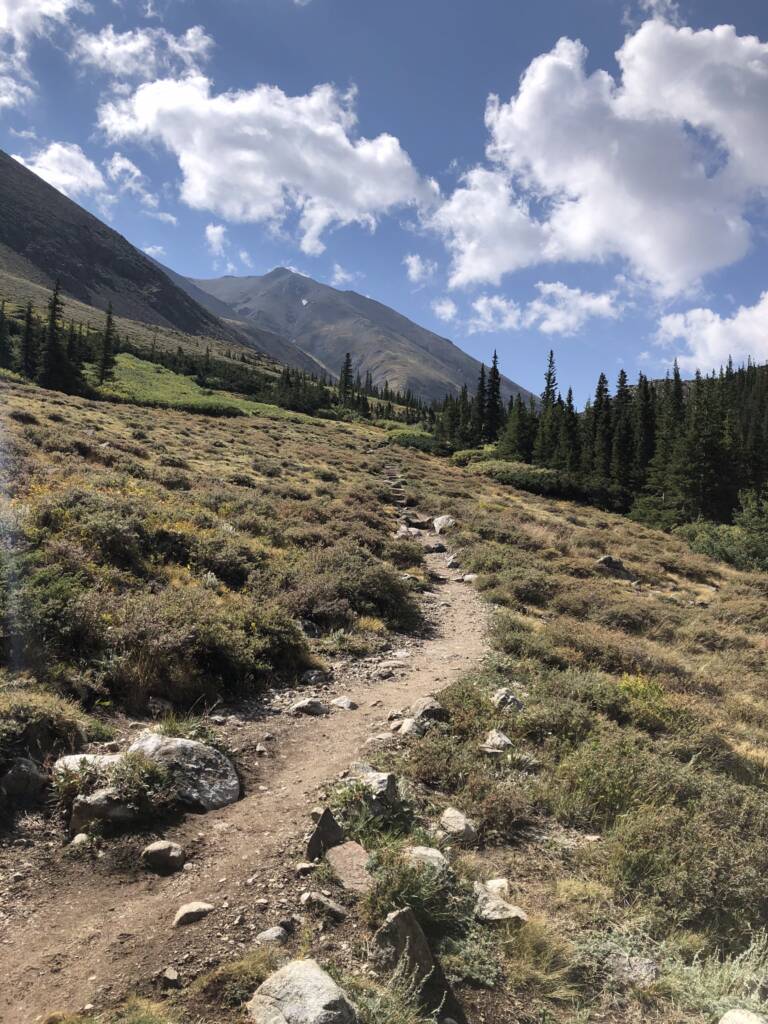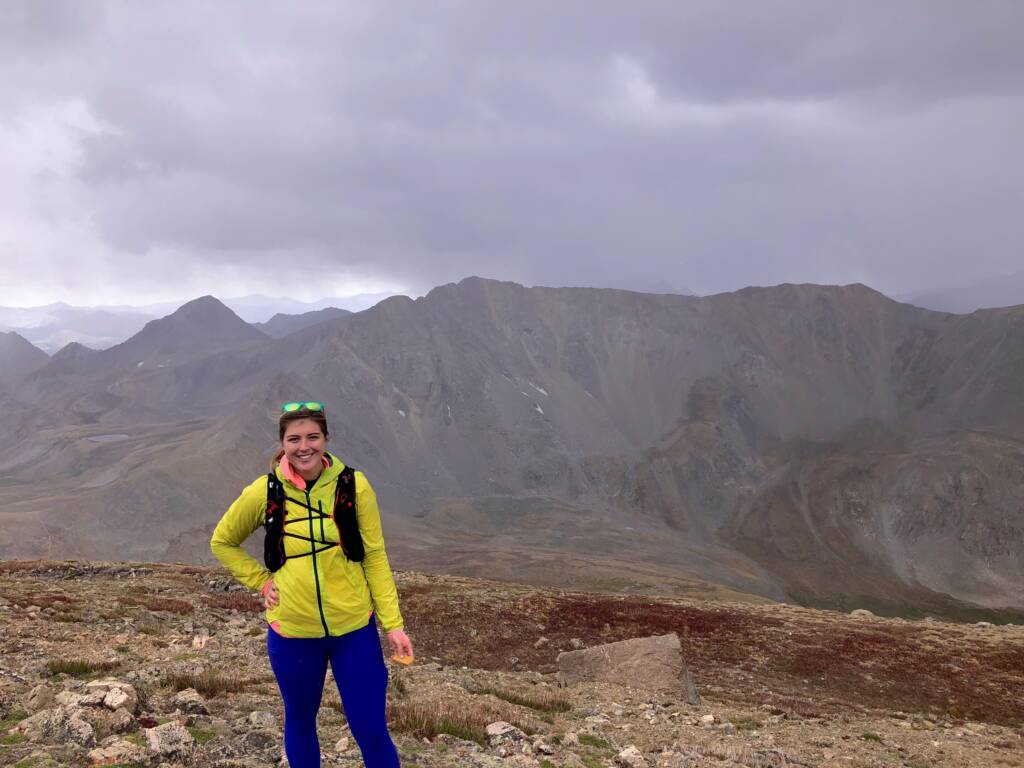Something is humbling about standing on top of the world—well, 14,199 feet above it, to be exact. In August 2020 I hiked my first 14er – Mount Belford. A 14er (pronounced fourteener) is a mountain peak that is at least 14,000 feet of elevation (4,267 meters) above sea level. For reference, Madison, WI is a whopping 873 feet above sea level. Mount Belford is one of 96 fourteeners in the United States (58 Colorado peaks are at 14,000 feet of elevation).
A total of 7.5 miles in length with 4,560 feet of elevation gain, Mount Belford is a class 2 hike, meaning moderate scrambling and exposed areas. It was one of those hikes where you ask yourself, mid-climb ‘Why do I do this to myself?’. But looking back, it taught me more than any easy trail ever could.
Start early
The night before we set out to hike, we camped in our van in Buena Vista. We started with a relaxing morning – which ended up being a big mistake. Upon waking up we made eggs and stopped for coffee on our 15-mile drive over to the trailhead. We ended up starting the hike around 9 am. On our way up, we were constantly getting passed by hikers on their way down. It was at that moment we realized we probably should have set an alarm and started way earlier. Instead of having a leisurely morning, we should have been at the trailhead around 5 am. It was probably the only time in my life I regretted stopping for coffee.
Thankfully, the weather was beautiful for the majority of the hike. On our final mile up the mountain (arguably the hardest mile) it started to hail. Little did we know, this was an almost daily occurrence on the mountains. “Afternoon storms” locals call them. This is why it is always recommended to get back to the tree line by 1 pm at the latest when hiking.
Being below the tree line provides protection from hail, lightning, etc. We were standing at the summit around noon, exposed to all of the elements, and realized that we needed to start heading back ASAP. With that in mind, we unfortunately had to skip the mountain-top PB & J that goes around. With Mother Nature on our side, thankfully even at its worst, the weather wasn’t too bad. There was some hail & lots of wind, but otherwise, our trip down was uneventful.

One step at a time – literally
It was around 3 hours into the hike and we had about a mile left. I looked up toward the top of the mountain and saw endless amounts of switchbacks ahead of me. I’m not going to lie – it did feel a little overwhelming to still have to climb that much elevation. I was starting to feel the physical effects of the elevation change and I felt myself forgetting the whole point of the experience. I decided that for the rest of the hike, I wasn’t going to constantly look in front of me but instead, I was going to look around me.
Though I wasn’t at the top yet, I already had a view that many people will never experience in their lifetime. The beauty of being surrounded by mountains is a freeing feeling that is hard to describe without someone experiencing it themselves. I was going to get to the top either way, so instead of worrying the whole time, I could spend the next hour enjoying the scenery around me. This was a great reminder to be mindful. Usually, the goal of the hike was to get to the top. I would argue that the goal of the hike is to enjoy the experience of the hike itself, with a successful summit being the cherry on top.
Be prepared for 14,000 feet of elevation
At the start of the hike, I had no idea what to expect. Not only was this my first 14er, but it was my first time in Colorado altogether. Before this, my only hiking experience was in Wisconsin; which is no comparison to the mountains out west. Other than going for an easy 2-mile hike the day before, I did nothing to prepare myself for the elevation change.
Once we hit about 13,000 ft elevation, I started to feel it. To be honest, I was surprised by how much the elevation affected me. My legs felt weak, my breathing felt hard, and no amount of water could curb my thirst. Looking back on how I felt, I almost have to laugh. I felt horrible, but that shouldn’t be surprising because I didn’t do anything to prevent or help my body when it was going through a big change and needed more support. I brought my running vest with water and a granola bar. That was my extent of preparation. If I were to do this hike again, I would prepare my body better by:
Acclimation
It is recommended to give the body at least 3-5 days to acclimate to the elevation change (especially if your hiking to 14,000 feet of elevation).
Hydration
Be ahead with hydration by increasing fluids in the days leading up to the hike. Also adding in electrolyte supplementation versus just hydrating with free water.
Fuel
Prepare the body with enough fuel (carbs & protein) both before, during, and after the hike. I was planning to have a big meal post-hike, but neglecting to give my body adequate nourishment both before and during the hike caused me to bottom out, further exaggerating the physical symptoms I was feeling.

After all the ups and downs (literally), I’ve come to appreciate that the most rewarding views do come after the hardest climbs. Overall, hiking Mount Belford was a very good experience. Any discomfort I experienced was worth it because I accomplished the goal I set out to do and I learned a lot along the way. The tough moments quickly faded behind the memories that mattered most, and by the time I got home, I was already daydreaming about my next trip out west—craving more mountains, more trails, and more moments that make it all worthwhile (and hopefully another summit at 14,000 feet of elevation).
Courtney Weber


